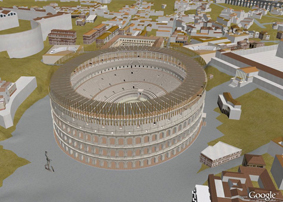Here is the official program. Please note that attendance is free, but registration is required, see below.
The Temple of Jerusalem: From Moses to the Messiah
May 11 12, 2008
The Inaugural conference of the Yeshiva University Center for Israel Studies,
Honoring Professor Louis H. Feldman
May 11 Noon 6:00 pm
Yeshiva University Museum at the Center for Jewish History
15 West 16th Street
Noon 1:00 pm Viewing of “Imagining the Temple: The Models of Leen Ritmeyer”
Session 1, 1: 00 3:30 pm
From the Tabernacle to the Dead Sea Scrolls
Chair: David Horwitz, Yeshiva University
Gary A. Anderson, University of Notre Dame
The Inauguration of the Tabernacle Service at Sinai
Shawn Zelig Aster, Yeshiva University
Centralization of Worship in the First Temple and Israelite Religious Belief
Shalom Holtz, Yeshiva University
Temple as Asylum and God as Asylum in the Psalms
Lawrence H. Schiffman, New York University
The Temple Scroll: A Utopian Temple Plan from Second Temple Times
Session 2, 3:45 6:00 pm
The Second Temple: Between Rome and Eternity
Chair: Moshe Bernstein, Yeshiva University
Menachem Mor, Haifa University
The Jewish and Samaritan Temples: Religious Competition in the Second Temple Period
Miriam Pucci Ben Zeev, Ben Gurion University
From Tolerance to Destruction: Roman Policy and Jewish Temple
Joshua Schwartz and Yehoshua Peleg, Bar Ilan University
Notes on the Virtual Reconstruction of the Herodian Period Temple and Courtyards
Leen Ritmeyer, Trinity Southwest University
Envisioning the Sanctuaries of IsraelThe Academic and Creative Process of Archaeological Model Making
May 12 9:00 am 5:30 pm
Stern College for Women
Geraldine Schottenstein Cultural Center
239 East 34th Street (between 2nd and 3rd Avenues)
Session 3, 9:00 11:30 am
The Jerusalem Temple in Medieval Christianity and Islam
Chair: David Berger, Yeshiva University
Frank Peters, New York University
Ruined Expectations: Christians and Muslims and the Jerusalem Temple
Moshe Sokolow, Yeshiva University
Fadail al-Quds: Jerusalem, The Temple and The Rock in Muslim Literature
Vivian B. Mann, Jewish Theological Seminary of America
Imagining the Temple in Late Medieval Spanish Altarpieces
Session 4, 12:30 2:45 pm
The Jerusalem Temple in Medieval and Early Modern Thought
Chair: Elisheva Carlebach, Queens College and the Graduate Center, CUNY
Jonathan Dauber, Yeshiva University
Images of the Temple in Sefer ha-Bahir
Mordechai Z. Cohen, Yeshiva University
God Dwelling in the Sanctuary? Interpretive Strategies of Maimonides, Nahmanides and Sefer ha-Hinnukh
Jacob J. Schacter, Yeshiva University
Remembering the Temple: Commemoration and Catastrophe in Medieval Ashkenazi Culture
Matt Goldish, Ohio State University
The Temple of Jerusalem from the Renaissance to the Enlightenment
Session 5, 3:00 5:30 pm
The Jerusalem Temple in the Modern World
Chair: Joshua Zimmerman, Yeshiva University
Jess Olson, Yeshiva University,
Jerusalem Rebuilt: The Temple in the Fin-de-siècle Zionist Imagination
Maya Balakirsky Katz, Touro College
The Second Temple in Contemporary Orthodox Visual Culture
Ann Killebrew, Pennsylvania State University
Recent Excavations and Discoveries On and Near the Temple Mount
Robert O. Freedman, Johns Hopkins University
Digging the Temple Mount: Archaeology and the Arab-Israeli Conflict from the British Mandate to the Present
Concluding Remarks
Louis H. Feldman, Yeshiva University
Steven Fine, Yeshiva University
Attendance is free and open to the public.
Register at http://www.yu.edu/cis
or call (212) 960-0189






